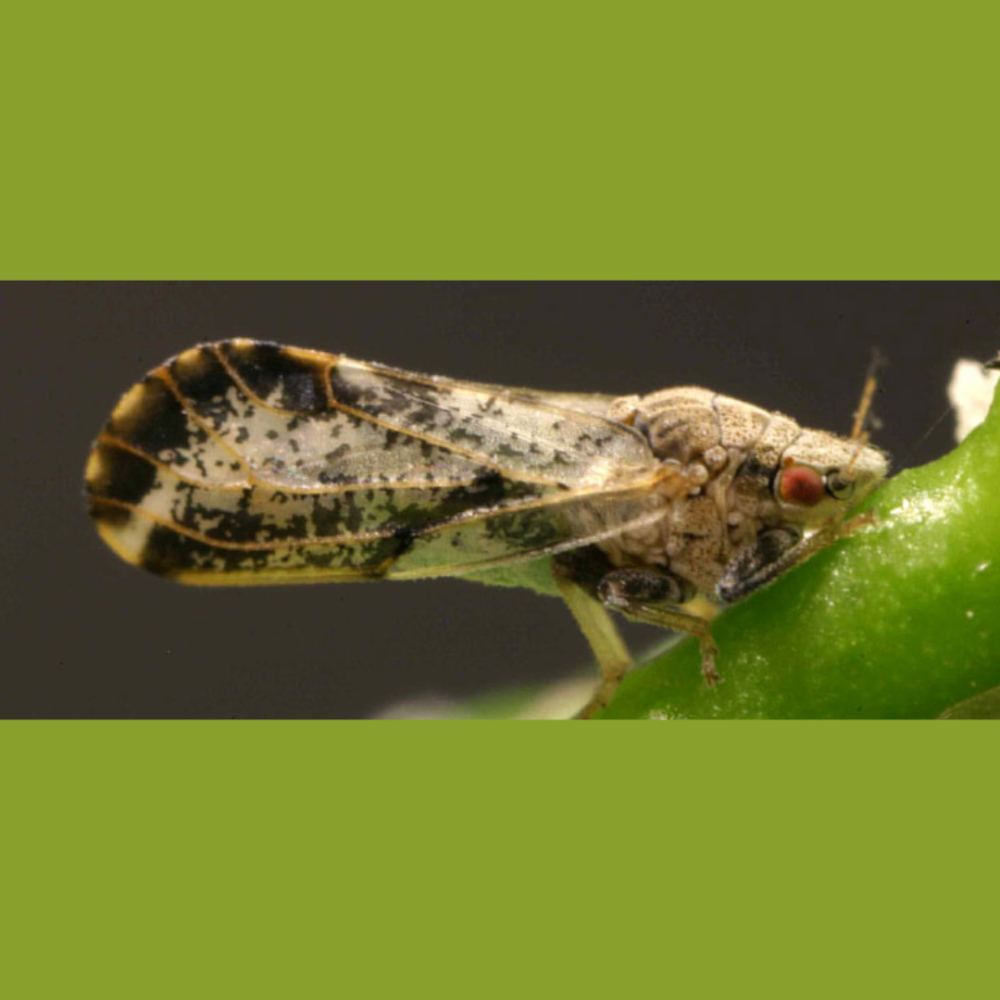
The California Department of Food and Agriculture (CDFA) has confirmed the presence of the insect, Asian citrus psyllid (ACP), Diaphorina citri Kuwayama, which feed on citrus plants and spread the disease huanglongbing (HLB), in Goleta and Santa Barbara County. ACP present a significant, clear, and imminent threat to California’s commercial citrus production, residential citrus plantings, natural resources, and economy.
The Asian citrus psyllid (ACP; Hemiptera: Psyllidae) is a tiny (0.125 inch, 3 mm, in length) mottled brown insect that is about the size of an aphid. The adult psyllid feeds with its head down, almost touching the leaf, and the rest of its body is raised from the surface at a 45-degree angle with its tail end in the air.
Adults typically live one to two months and develop more quickly in warmer weather. Females lay tiny yellow-orange, almond-shaped eggs in the folds of the newly developing, unfurled, soft leaves, called the feather flush. Each female can lay several hundred eggs during her lifespan. Nymph development is limited to the flush or new growth of citrus. Nymphs are typically yellow-orange but can also have a green hue and lay flat on the surface of new feather flush (young instars), edges of leaves, and stems of flush (older instars).
Unless emergency action is taken to disrupt these ACPs life cycles, there is high potential for sudden future detections in and around commercial groves in Santa Barbara County.
Public Notification:
Residents of affected properties shall be invited to a public meeting or contacted directly by CDFA staff.
Residents are notified in writing at least 48 hours in advance of any treatment in accordance with the Food and Agricultural Code sections 5771-5779 and 5421-5436.
For any questions related to this program, please contact the CDFA toll-free telephone number at 800-491-1899 for assistance. This telephone number is also listed on all treatment notices.
For more information, and to read the full proclamation and the surveillance and treatment plan for the ACP infestation, click here.

